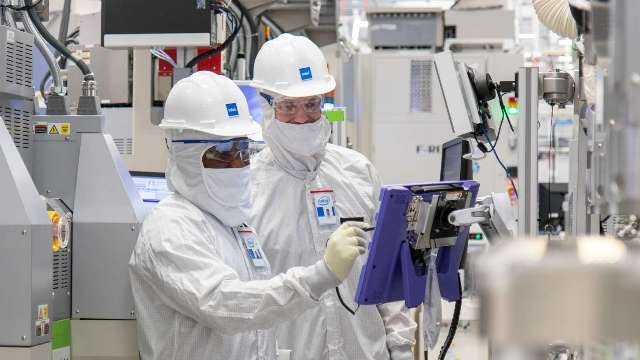Intel is once again at the center of America’s industrial and political strategy after President Donald Trump announced that the U.S. government will take a 9.9 percent equity stake in the chipmaker.

The deal, worth $8.9 billion, represents a shift in how Washington supports strategic technology companies and could have profound implications for Intel’s turnaround, its foundry ambitions, and the global semiconductor race, Reuters news report said.
Years back, the United States blocked a $103 billion deal from Broadcom to buy chipset rival Qualcomm.
In late 2017, Broadcom — then based in Singapore and formerly known as Avago — launched an unsolicited bid to acquire Qualcomm, initially offering $103 billion. This offer was quickly rejected by Qualcomm’s board.
The U.S. Committee on Foreign Investment in the United States (CFIUS) stepped in to review the deal, citing national security risks tied to 5G dominance and the potential erosion of America’s technological edge. On March 12, 2018, President Trump issued an executive order blocking the takeover under national security grounds.
A Lifeline for a Struggling Chip Giant
Intel has faced years of declining competitiveness, falling behind Taiwan Semiconductor Manufacturing (TSMC) in advanced chip manufacturing and losing CPU market share to AMD. Despite billions in investments, Intel’s foundry business has yet to attract major customers at scale.
The U.S. stake gives Intel immediate $10 billion in funding, combining $5.7 billion in unpaid CHIPS Act grants and $3.2 billion from the Secure Enclave program, effectively converting subsidies into ownership. The agreement provides Intel with capital to build and expand fabrication plants (fabs) in the U.S., while giving Washington a stronger hand in securing domestic semiconductor production.
What It Means for Intel’s Foundry Business
Intel’s biggest challenge lies in its Intel Foundry Services (IFS), which has yet to compete effectively with TSMC and Samsung. Analysts argue that even with government backing, Intel needs to prove its technological edge and attract large-scale contracts.
Federal support provides Intel breathing room to invest in new fabs, but success will depend on execution. The government’s passive ownership stake—without a board seat but with voting alignment—ensures Intel retains management control while providing a financial safety net.
The additional five-year warrant allowing the government to purchase another 5 percent of Intel at $20 per share gives Washington leverage if Intel struggles further, particularly if the foundry unit underperforms.
Market and Investor Reaction
Intel’s stock rose 5.5 percent during regular trading and another 1 percent in after-hours following the announcement, signaling investor optimism. However, some portfolio managers caution that cash infusions alone may not fix Intel’s fundamental problems.
Geopolitical and Strategic Implications
The U.S. move underscores the strategic importance of semiconductors in national security and economic competitiveness. By taking equity stakes in key companies—from Intel to rare-earth mining firms—the government is ensuring that critical supply chains remain under American influence.
The intervention also comes after SoftBank’s $2 billion stake in Intel, highlighting renewed investor interest in the chipmaker despite its 2024 annual loss of $18.8 billion, its worst since 1986.
What’s Next for Intel
For CEO Lip-Bu Tan, who only took the helm in March 2025, the government partnership is both a relief and a pressure point. Trump’s criticism of Tan’s leadership has now turned into political backing, but expectations are high. Intel must:
Accelerate foundry competitiveness to close the gap with TSMC and Samsung
Reclaim AI opportunities lost to Nvidia
Strengthen CPU leadership against AMD
Prove capital efficiency in new U.S. fabs
Conclusion
The U.S. government’s stake in Intel is a historic intervention in the semiconductor industry. For Intel, it provides much-needed funding and credibility as it attempts to rebuild its leadership in advanced chip manufacturing. For Washington, it secures a stronger foothold in a sector critical to both defense and economic strategy.
The question remains: Can Intel turn federal backing into technological leadership? Investors and policymakers alike will be watching closely as America’s once-dominant chipmaker fights to regain its global standing.
Baburajan Kizhakedath
